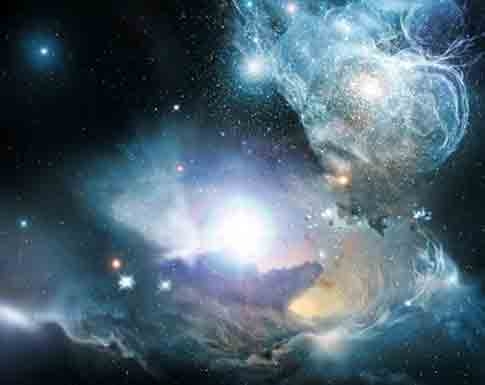Key Takeaways:
Quasars are some of the most luminous and distant objects in the universe — and appear to have something in common with ordinary light bulbs, say researchers at the University of Illinois at Urbana-Champaign and at the National Center for Supercomputing Applicatoins.
Quasars were discovered 40 years ago, when astronomers noticed that these objects — thought at the time to be stars — were emitting far more radio waves than expected. Researchers found, upon further inspection, that these objects represented a new class of extremely energetic astronomical object.
Astronomers now believe quasars are young galaxies powered by supermassive black holes at their centers. These black holes can be millions or billions of times more massive than our sun.
“With such enormous sources of energy, quasars are among the brightest objects in the universe, some giving off thousands of times more light than our own Milky Way galaxy from a region slightly larger than our solar system,” said Brian Wilhite, an astronomer at Illinois and a researcher at NCSA. “Astronomers have also determined that quasars are incredibly variable, with some quasars quadrupling in brightness in the span of just a few hours.”
Although rarely that dramatic, variability in light output is seen in nearly all quasars, with average quasars changing in brightness by 10 to 15 percent over the course of one year, Wilhite said. Astronomers have yet to pin down the exact mechanism that drives these changes.
Recently, Wilhite and other researchers at Illinois and NCSA found that this variability is related to both the mass of the black hole at the center of the quasar, and to the efficiency of the quasar at converting gravitational potential energy into light energy.
Using data obtained by the Sloan Digital Sky Survey, the researchers monitored the brightness and estimated the central black hole mass of more than 2,500 quasars, observed over a period of four years. They found that, for a given brightness, quasars with large black hole masses are more variable than those with low black hole masses.
“Quasars with more massive black holes have more gravitational energy that can potentially be extracted, which we would see in the optical as light,” said Wilhite, who presented the team’s findings at the American Astronomical Society meeting in Seattle on Monday, January 8.
“If two quasars have the same brightness, the one with the larger black hole mass is actually less efficient at converting this gravitational energy into light,” Wilhite said. “We have found that these less-efficient quasars have more variable light output. It could be a little like flickering light bulbs — the bulbs that are the most variable are those that are currently the least efficient.”
The researchers’ findings mark the first time that changes in light output of quasars have been related to their efficiency, and could prove useful in helping astronomers decipher the underlying physics that causes quasars to vary so wildly.










